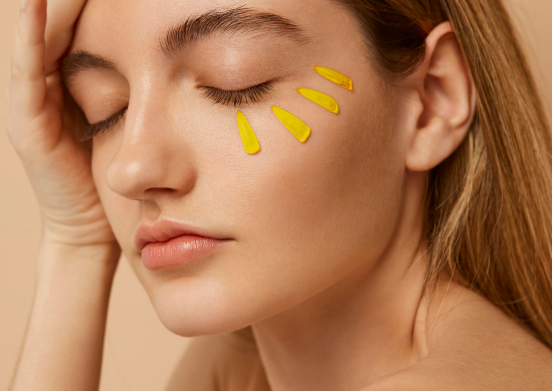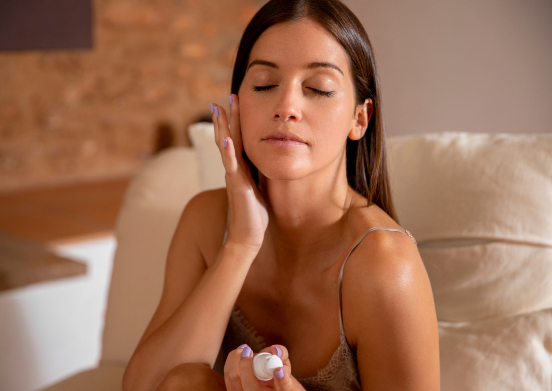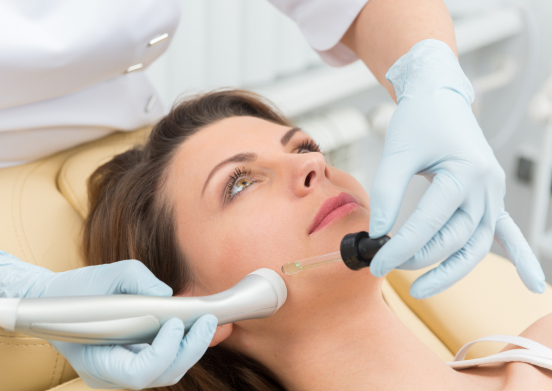
Sunscreen and Skin Health:Your Shield Against UV Damage
Sunscreen is a critical element in the preservation of skin health, as it serves as a protective barrier against the harmful effects of UV radiation, preventing premature aging, reducing the risk of skin cancer, and promoting a lasting, youthful complexion. In this blog post, we will explore the effects of the sun on our skin and how we can combat its effects on aging.
What is UV radiation?
UV radiation from the sun comes in two primary forms: UVA and UVB. UVA rays have a longer wavelength and thus lower energy than UVB rays. They can enter the middle layer of your skin called the dermis. They make up 95% of the UV radiation that makes it to earth.

UVB rays have a shorter wavelength and thus higher energy than UVA rays. Therefore they can only reach the outer layer of your skin (also known as the epidermis).
- UVA rays are responsible for premature aging and can penetrate deep into the skin, causing wrinkles and age spots.
- UVB rays, on the other hand, are responsible for sunburn and can contribute to the development of skin cancers.
How does Sunscreen work?
To effectively protect your skin, it's important to use a broad-spectrum sunscreen that guards against both UVA and UVB rays.
It achieves this feat through the use of specialized active ingredients. UVA rays, which are responsible for premature aging and can penetrate deep into the skin, are thwarted by sunscreen's UVA-blocking agents such as Zinc Oxide and Titanium Oxide1. These ingredients act as a shield, preventing UVA rays from causing wrinkles, fine lines, and age spots by blocking their ability to penetrate the skin's deeper layers.

On the other hand, UVB rays, which are responsible for sunburn and play a role in the development of skin cancers, are counteracted by sunscreen's UVB-blocking components. These ingredients work by absorbing and dissipating the UVB rays before they can damage the outermost layer of the skin. Ingredients that act as absorbers include Oxybenzone, Octocrylene, 4-Methylbenzylidene camphor and Butyl methoxy dibenzoylmethane.
What is SPF?
“SPF stands for Sun Protection Factor. SPF relates to the amount of time it takes for redness to appear on the skin compared to when no product is used at all1.”
This assessment is typically conducted in a controlled laboratory environment. So, if it takes 10 minutes for unprotected skin to turn red, then (in theory), correctly applied SPF30 sunscreen would extend this timeframe to 300 minutes before experiencing sunburn (30 times longer than if no protection was used). However, achieving this level of protection in real-life scenarios can be challenging due to various factors, including skin type, UV intensity, water activities, the amount of sunscreen used, and even how uniformly it's applied, as this can all influence the actual level of protection.
It's important to note that SPF primarily measures UVB protection, so when choosing a sunscreen, it's advisable to select a broad-spectrum product that also protects against UVA rays, which contribute to premature aging and long-term skin damage.
How Much Sunscreen Do I Need?
https://www.cancer.org.au/ recommends approximately one teaspoon for each arm, leg, body front, body back and face (including neck and ears) so upwards of 7 teaspoons per person, applied every 2 hours (irregardless of if there is swimming/water activities). Additionally, it's essential to apply sunscreen at least 20 minutes prior to UV exposure for optimal effectiveness.
What Else Can I Do?
The slogan "slip, slop, slap" encapsulates a comprehensive approach to sun protection and was created by the Cancer Council in 1981 and adapted in 2007 to include “seek and slide”. It serves as a memorable reminder of the steps we should take to shield our skin from the damaging effects of the sun.
"Slip" advises us to slip on protective clothing to cover as much skin as possible, reducing direct sun exposure.
"Slop" encourages the application of sunscreen generously, ensuring that exposed skin is shielded from harmful UV rays.
"Slap" reminds us to wear a wide-brimmed hat to protect the face, neck, and ears.
"Seek" advises seeking shade when the sun's rays are at their strongest, usually between 10 a.m. and 4 p.m.
"Slide" emphasizes the importance of wearing sunglasses to safeguard the eyes from UV radiation.
This simple yet powerful slogan underscores the significance of a holistic approach to sun protection, promoting skin health and reducing the risk of sun-related skin damage and skin cancer.
Incorporating Sun Safety into Your Skincare Routine
To integrate sun safety into your skincare regimen, follow these steps:
- Start with Cleansing: Begin with a gentle cleanse to prepare your skin for sunscreen application.
- Apply Sunscreen: Choose a broad-spectrum sunscreen with at least SPF 30 and apply it generously to all exposed areas, including the face, neck, ears, and any other uncovered skin.
- Reapply: Remember to reapply sunscreen every two hours, especially if you're outdoors or participating in water activities.
- Layer Your Products: Apply sunscreen after serums and treatments but before makeup. Opt for makeup products that also contain SPF for added protection.
- Practice "Slip, Slop, Slap, Seek, Slide": Incorporate the principles of this campaign into your daily routine to ensure comprehensive sun safety.
By making sun protection a regular part of your skincare routine, you not only preserve your skin's health and beauty but also reduce the risk of sun damage, premature aging, and skin cancer. Sun safety is a fundamental aspect of holistic skincare that contributes to your overall well-being and maintains a youthful complexion for years to come
1. Sunscreen faqs [Internet]. Cancer Council; [cited 2023 Sept 18]. Available from: https://www.cancer.org.au/cancer-information/causes-and-prevention/sun-safety/about-sunscreen/sunscreen-faqs


 Home
Home



